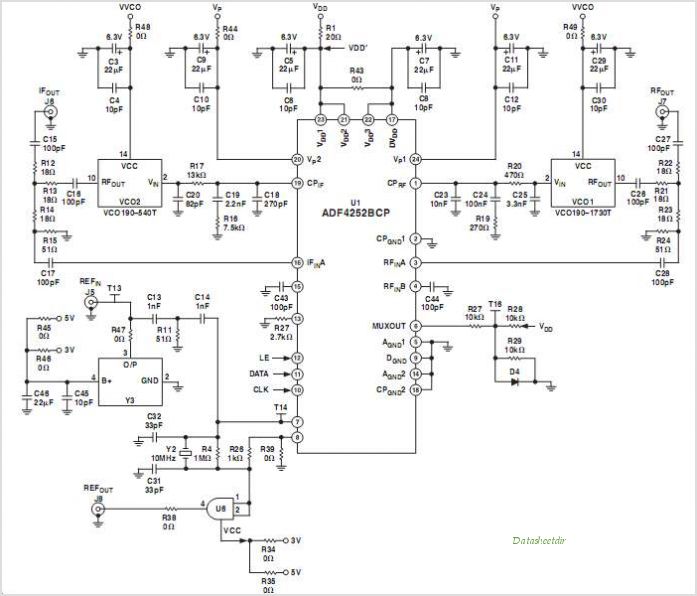
electronic doorbell using UM3481

The core component of this circuit is the UM3481 integrated circuit (IC), which operates with a 1.5-volt battery. It is suitable for applications such as electronic doorbells, toys, melody clocks, and music boxes. The UM3481 is engineered to play melodies based on pre-programmed data and can produce 16 different songs along with three instrumental effects: piano, organ, and mandolin. Additional features of the UM3481 doorbell circuit include eight selectable beats, low standby current consumption, three timbres (piano, organ, and mandolin), and five tempos available through mask settings. The IC can accept an input voltage of up to 5 volts but typically functions optimally at 1.5 volts. The speaker used in this doorbell circuit should have an impedance of 8 ohms.
The UM3481 integrated circuit serves as a versatile sound generator, making it an excellent choice for various audio applications. The circuit design typically includes a power supply section that stabilizes the 1.5-volt input to ensure reliable operation. The power supply can be implemented using a simple battery holder or a battery management system that maintains the voltage level.
The circuit layout includes a microcontroller interface that allows for easy programming of the melodies and sound effects. A user-friendly interface can be created using push buttons or switches to select the desired song or instrumental effect. The UM3481 can be connected to an 8-ohm speaker, which is crucial for delivering clear sound output. The speaker should be connected to the output pins of the UM3481, ensuring proper impedance matching to prevent distortion and optimize sound quality.
In addition to the sound generation capabilities, the circuit can be enhanced with visual indicators, such as LEDs, that light up in synchronization with the melodies. This feature can improve user engagement, particularly in toy applications. The circuit can also include a low-power design to extend battery life, utilizing components that minimize current draw during standby mode.
Furthermore, the design can incorporate a small microcontroller to manage the selection of songs and effects more dynamically. This allows for additional features, such as random song selection or volume control, enhancing the overall functionality of the circuit. The integration of these elements can lead to a robust and user-friendly electronic sound-producing device suitable for a wide range of applications.The heart of this circuit is the UM3481 IC which can be powered by a 1. 5 volts battery and can be used for electronic doorbell, toys, melody clock, music box, etc. The UM3481 IC is designed to play the melody according to the previously programmed information and is capable of generating 16 songs with 3 instrument effects : piano, organ and ma ndolin. Other features of the UM3481 dorbell circuit are : 8 beats selectable, low standby current, 3 timbres : piano, organ, and mandolin, up to 16 songs ¬ 5 tempos available through mask setting, 14 tones selectable. The IC accepts a input voltage up to 5 volts but typically work powered by 1. 5 volts. The speaker used in this door bell circuit project must have an 8 ohms impedance. 🔗 External reference
The UM3481 integrated circuit serves as a versatile sound generator, making it an excellent choice for various audio applications. The circuit design typically includes a power supply section that stabilizes the 1.5-volt input to ensure reliable operation. The power supply can be implemented using a simple battery holder or a battery management system that maintains the voltage level.
The circuit layout includes a microcontroller interface that allows for easy programming of the melodies and sound effects. A user-friendly interface can be created using push buttons or switches to select the desired song or instrumental effect. The UM3481 can be connected to an 8-ohm speaker, which is crucial for delivering clear sound output. The speaker should be connected to the output pins of the UM3481, ensuring proper impedance matching to prevent distortion and optimize sound quality.
In addition to the sound generation capabilities, the circuit can be enhanced with visual indicators, such as LEDs, that light up in synchronization with the melodies. This feature can improve user engagement, particularly in toy applications. The circuit can also include a low-power design to extend battery life, utilizing components that minimize current draw during standby mode.
Furthermore, the design can incorporate a small microcontroller to manage the selection of songs and effects more dynamically. This allows for additional features, such as random song selection or volume control, enhancing the overall functionality of the circuit. The integration of these elements can lead to a robust and user-friendly electronic sound-producing device suitable for a wide range of applications.The heart of this circuit is the UM3481 IC which can be powered by a 1. 5 volts battery and can be used for electronic doorbell, toys, melody clock, music box, etc. The UM3481 IC is designed to play the melody according to the previously programmed information and is capable of generating 16 songs with 3 instrument effects : piano, organ and ma ndolin. Other features of the UM3481 dorbell circuit are : 8 beats selectable, low standby current, 3 timbres : piano, organ, and mandolin, up to 16 songs ¬ 5 tempos available through mask setting, 14 tones selectable. The IC accepts a input voltage up to 5 volts but typically work powered by 1. 5 volts. The speaker used in this door bell circuit project must have an 8 ohms impedance. 🔗 External reference





